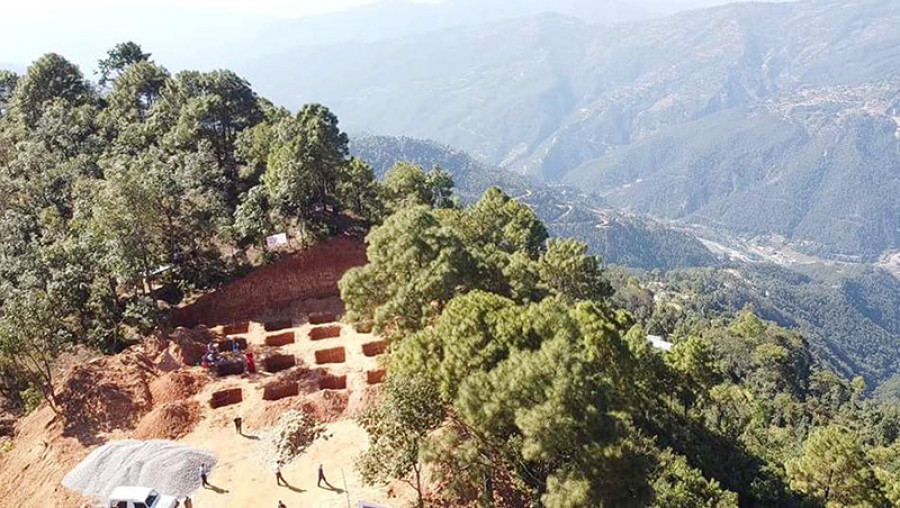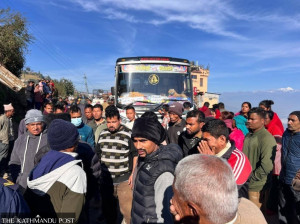Bagmati Province
Community Forest Research Centre to mark birthplace of conservation movement
The centre is expected to establish itself as an important assembly point for researchers to work on ways to manage forest resources sustainably.
Anish Tiwari
A community forest research centre is being set up in Thokarpa Community Forest, Sindhupalchok, considered the birthplace of the concept of the community forest in Nepal.
The construction of a well-facilitated research centre has begun in Ward No. 1 of Sunkoshi Rural Municipality at the cost of around Rs 450 million, the committee overseeing the project said.
“The federal Ministry of Forests and Soil Conservation allocated Rs20 million for the project in its budget for the fiscal year,” said Uttam Bhandari, chairman of the construction and management committee of the centre.
“Ten different buildings, including a two-storey administrative building, a residential complex, a museum and a guest house will be constructed in the spacious area of Thokarpa Community Forest,” Bhandari added.
The committee believes that the centre will be recognised as a pioneering facility dedicated to the study of community forests.
It was in 1971 that Nil Prasad Bhandari, a resident of Thokarpa, initiated a campaign to conserve depleting forests on 9.5 hectares of land in the area. His vision was to get the local community involved in management of forests. He hoped to achieve conservation goals with the active participation of local people and stem rampant logging that had led to shortages of firewood and fodder.
Speaker of House of Representatives Agni Prasad Sapkota, who was elected from Sindhupalchok district, laid the foundation to the centre amid a function in Sunkoshi-1 on Friday. Sunkoshi Construction Company was awarded the contract for administrative building the first phase of the project at the cost of Rs 18.8 million.
The centre is expected to establish itself as an important assembly point for researchers from Nepal and abroad to work on ways to conserve community forests and to find ways for sustainable management of forest resources. “Anyone who wants to study community forest can stay here and do so after the buildings are completed,” said Man Bahadur Khadka, director-general at the Department of Forests and Soil Conservation.
Authorities aim to develop the research centre and also carry out income-generating activities for locals through tourism.
The government had declared Thokarpa as the birthplace of community forest in 2016 and recognised the contributions of Nil Prasad Bhandari to the movement. There are now around 22,200 community forest groups across the country with around 14 million members.
The campaign was started after the endorsement of a proposal by the then Village Assembly on March 11, 1973. Villagers were handed over the responsibility of conserving forest resources for a decade. The proposal read, “There are no trees above four feet in the forest inside this Village Panchayat. The government can only mark trees having four feet circumference for logging. It takes at least 10 years for the trees to reach that size.”
As it was a completely new model, the then government was not sure that locals could conserve forest resources. That is why, the proposal presented by Bhandari, took a long time to be taken seriously.
On August 9, 1973, the Division Forest Office in Sindhupalchok finally handed over the Thokarpa forest to locals for two years.
On October 28, 1973, a meeting of the village panchayat had also formed a 103-member forest conservation, promotion and development committee in the presence of Jogmehar Shrestha, the then Forest Minister. Villagers planted tree saplings on the barren hills of Thokarpa during March and April the same year after the government handed over the forest.
A nursery was also established in Thokarpa by planting 600,000 tree saplings.
The government is also planning to set up the central office of Thokarpa Community Forest, arguably the first forest managed by the local community, at Babarmahal, Kathmandu.




 20.12°C Kathmandu
20.12°C Kathmandu











